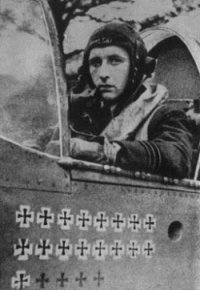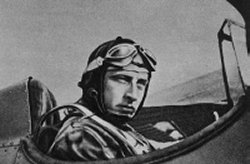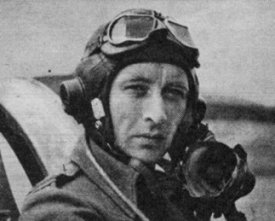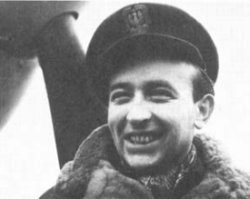
Stanislaw Skalski was born on the 27th of October 1915, he Completed Pilot Training School in 1938, Skalski was ordered to the 142nd Fighter Squadron in Torun. On the 1st of September 1939 he downed a German Hs 126 reconnaissance aircraft In September 1939, Skalski reached "ace status", by personally downing 6 German aircraft (1 Ju 86, 2 Do 17, 1 Ju 87, 2 Hs 126), plus 1 Hs 126 shared with another pilot. Furthermore, he damaged another three planes (1 Bf 109, 1 Hs 126, 1 Ju 87). Skalski flew his last sortie with his P-11c on 16 September. The next day he fled the country, as did several other Polish pilots, to Romania, and from there to fight in France and England. On 12 August 1940, 2/Lt Skalski joined 501 Squadron RAF (commander S/Ldr H.A.V. Hogan) and took part in the Battle of Britain. Stanislaw Skalski's part in the combat of 5th of September 1940, was very dramatic. Early in the morning, 501 Squadron took off to attack a large group of German aircraft. In the first attack Skalski managed to hit an He 111 bomber, and set its right engine on fire. Following this, the Polish pilot shot down one of the escorting Bf 109s. The pilot of the Bf 109 bailed out. A few minutes later, as Skalski flew alone at 8000 meters altitude, he made a surprise attack on another Messerschmitt. With success! But in turning to his map to note the area of the victory, his own aircraft was hit by a well-aimed burst of fire. The shells slammed into the fuel tanks and the "Hurricane" immediately caught fire. Skalski bailed out from his diving fighter and parachuted to the ground. Severe burns kept him in a hospital for six weeks. During the Battle of Britain, Skalski shot down a total of six German planes.


